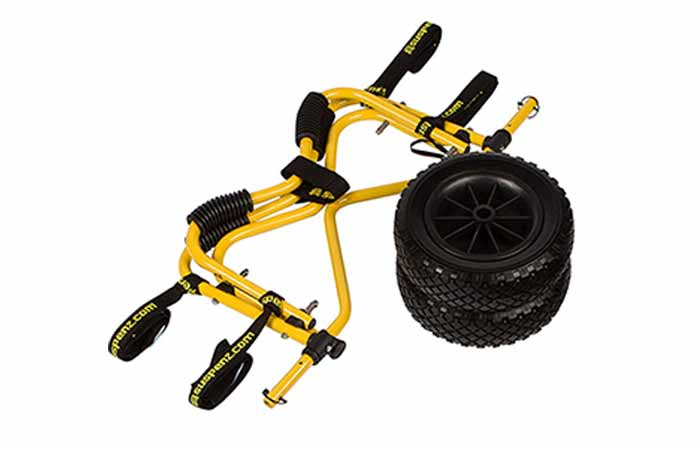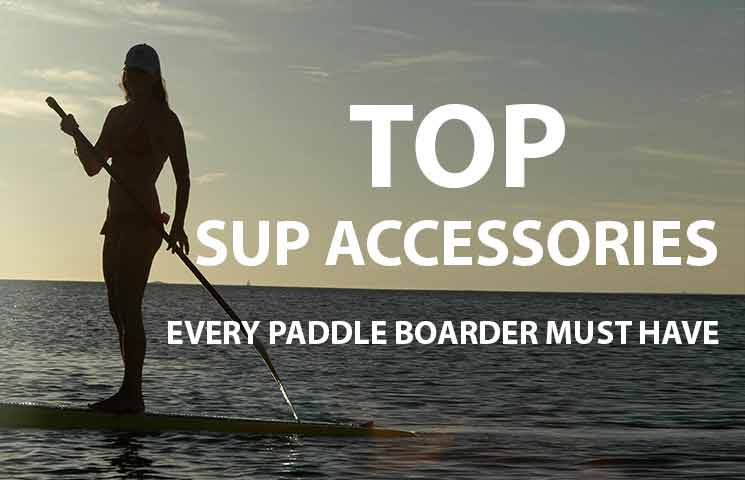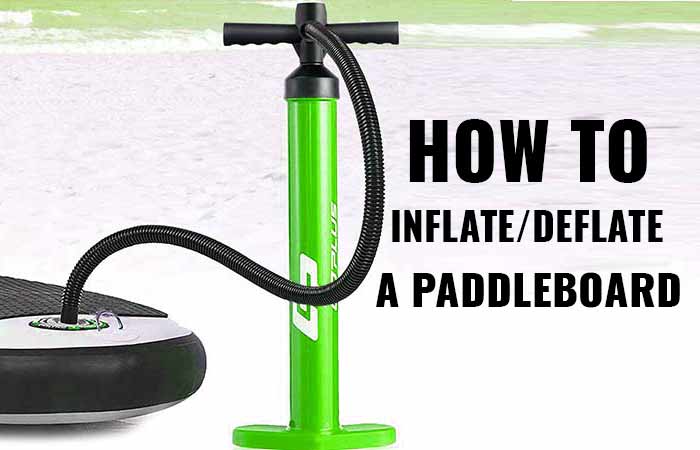Paddleboard Tips & Tricks to Improve your SUP Technique Quickly
Paddleboarding is an active and engaging water sport many people love to indulge in. But, more often than not, people come unprepared in multiple ways. To get the best out of each session, you need some tips that will help learn and master this water sport faster.
These tips and tricks range can range from checking the weather conditions, warming up, having the right board and gear, having the right posture, holding the paddle properly and so forth. Following are awesome SUP tips so you don’t miss out on a single thing the next time you go out paddleboarding.
1. Observe the Weather Conditions
Unlike surfing, paddleboarding is supposed to be a controlled water sport. You get to choose which direction you will go unless you’re an advanced player where you can steer yourself past the strong wind.
But as a beginner, it’s always recommended that you check your weather conditions, from how strong the wind is blowing so you’re not propelled every other way, as you try to learn the sport.
You may also prefer a warm sunny day which is why you should heed the weather forecast before the day you go out paddling.
Secondly, check on the water conditions. The strong winds may affect the water causing them to have large waves making it difficult for you to remain stable and balanced on the board.
You don’t want to end up lying on your belly flat on the board the entire session because you’re avoiding being hit by strong waves.
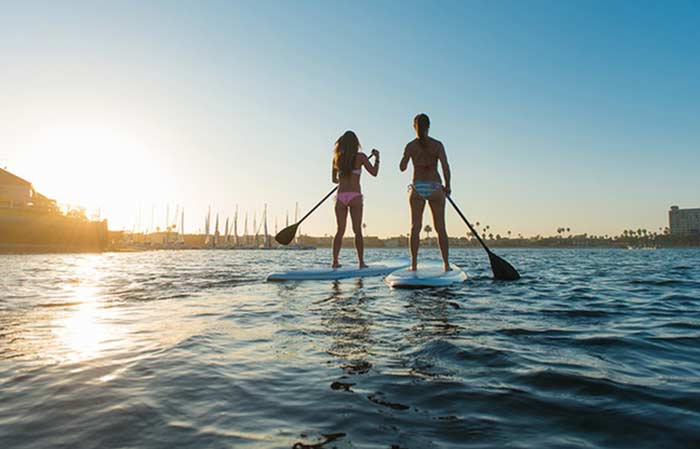
2. Have the Right Gear
This point can’t be emphasized enough. Much like any other sport, paddleboarding has skill levels from novice to an apprentice and finally the advanced players. As a beginner, you can’t be using a racing stand up paddleboard to learn about gaining stability on the water.
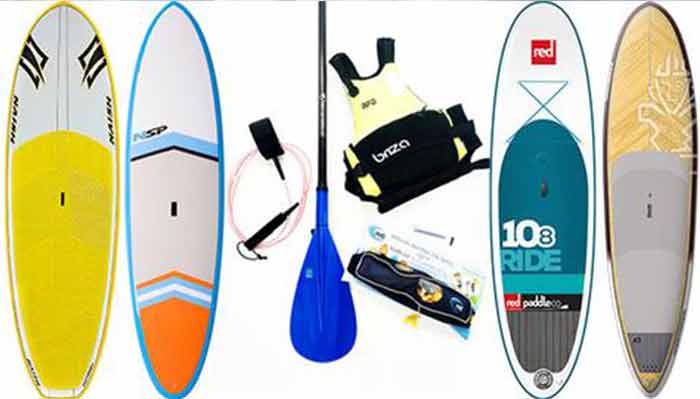
The boards are manufactured in different designs to cater to surfers at different levels. Beginner paddleboards are usually wide to about 30 to 35 inches and long to give you ample space to master the basic techniques. They designed to provide the largest surface area which in turn makes staying stable easy.
You also need a board that’s matches your size and weight. Your body type should match against size and volume. Moreover, many novices will also prefer a soft (inflatable) board compared to the solid kind.
The paddle also needs to be of the right length. This will help you paddle efficiently and avoid too much pressure on your back muscles as you bend or stoop over all the time.
Furthermore, with the right length, you can preserve energy and maintain stability. Select a paddle that’s ideally nine to 11 inches taller than your height.
3. Get a Leash
Your gear can also include accessories that aid with your learning. The leash, for example, is an excellent accessory you shouldn’t miss.
This safety tool is used to tether you to the board so that the board doesn’t get away from you. It helps you revert back quickly once you fall.
Not only is it life-saving, but it also keeps the board near you. Once you’re tethered to it, you no longer have to worry about losing your board due to the strong winds.
When purchasing the leash you will notice that there are different kinds. Some are attached at the calf or ankle, there some that are coiled while others are uncoiled, there are also branded and unbranded leashes. Most branded ones are made of high-quality materials that can’t be broken off easily.
Just ensure that whichever option you go for, can be easily detached to avoid injury in case your board gets tangled up by plants or if it is pulled by currents.
4. Wear a float vest
These vests keep you afloat in case you fall into the water. It may not be necessary if you’re already an experienced who can comfortably tread and scull in water.
Some of these vests are designed with bright colors which make you more visible to other water users.
5. Warm Up
Just like any other sport, it is absolutely necessary to warm yourself up before getting into the water with your board. A full-body stretch is a good place to start from.
Paddleboarding is more like just pulling water from under you backward, or reverse. But it takes more work than that. The number of calories you can burn out in an hour is unbelievable compared to even the gym.
This is why doing some warm-ups and learning how to engage your core is a necessary preparatory process.
The core – precisely the oblique muscles play a significant role in how you paddle. Using your arms alone will only tire you easily and can even affect your general strength capacity.
Your core muscles, however, will aid you to build on stamina, which in turn builds on stability and balance – the two vital skills for this sport.
6. Master the Right Paddling Technique
There are different techniques and strokes you can be taught to ensure you are exerting the right energy and your burning calories the right way. From the basics of mounting on the board to balancing, standing, and paddling, there are comprehensive training that guides one on the right way to do it.
Following are some paddling tricks to get the best out of your paddle;
- Hold the paddle with your hand apart. one hand at top and other at the middle of the shaft. Always keep the paddle in the water to move and stay stable
- To move forward, reach forward, plant the paddle (whole blade underwater) in front of you and pull it back to your feet. If your throwing water, it means you are doing it wrong. Correct stroke can save energy and allowing you to paddle longer.
- Do not stroke too far to the side away from the board while holding the paddle diagonally away from your hips. Instead, hold the paddle vertical, then pull straight back close to the board
- Use the full blade, and not the tip to pull water. With the whole blade underwater you get a nice catch of the water.
- Paddle through the water instead of scooping the water. Scooping is ineffective and consumes a lot of energy. Plus you will be splashing water everywhere making you lose your stability.
- Keep a relaxed grip on the paddle. A tense grip will tire your arms and it doesn’t really help with paddling.
- Take a tiny break after each stroke. It’s not for relaxing, but for getting a feel of the board and your direction.
7. Place your weight on the center of the board
While on the board, stand the midsection where you can control the balance. Avoid standing closer to the nose or tail area of the board
Use the board carry handle to find the center of the board. As long as the board is flat, the handle will be at the center, where should stand
8. Stay out of the way
Paddle boards are usually big and hard (the solid types). They can hurt you or other water users. While ensuring that you have enough room to practice, do remember there other people in the water. Keep a distance.
9. Stick to your skill level
It’s easy to get swayed into this sport, from water splashing all over, the sun warming you up, great views, and fresh air. But you should also stick to your cup of tea.
Be wise and surf in the right conditions for your skill level. Train for as long as you can without using too much energy, learn the skill gradually rather than rushing off for competitions. . Heed the instructions from professionals since they most probably know more and have reasonable experience
10. Get Help
This water sport is more recreational than competitive but as a beginner, the best way to learn is to get help from someone who is an expert at it. An instructor or a friend/family member who has some knowledge can guide you through all you need to get started.
Better yet, hire an instructor or a professional to teach you how to go about these techniques and strokes.
Of course, you can go online and watch numerous videos, read on blogs, but when you take a look at your board, you have no idea which side is the nose or the tail…it happens.
In addition to transferring their knowledge to you, the helpers can give you company as well as watch you as you build up your confidence.
Getting the right assistance can save you a lot of time having to maneuver aimlessly in water instead of learning such an easy water sport.
11. Never stop learning
Once you’ve mastered the basics try out new tricks and have more and more fun. Following are some new tricks you can try
13. Look after your board and paddle
Paddling boards and paddle are expensive and fragile. How long they will last will depend on how well care for them.
After paddling, ensure you clean, transport them safely and store them properly
Further SUP Ideas & How-tos
The following is a collection of more Stand up paddleboarding ideas and board guides
Paddleboarding
- What to Wear for Stand Up Paddleboarding?
- How to Paddle Board-Is it Hard? SUP Beginner Techniques & Tricks
- How to Get on a Paddle Board, After Falling & from a Dock
- How many Calories does Paddleboarding Burn?
- Best Paddle Board Workouts/Exercises to Improve Your Fitness
- Benefits of Paddleboarding(SUP)
SUP Equipment & Accessories
- Best SUPs for Bigs Guys
- Best Bamboo Paddle Boards
- Best SUP-Kayak Hybrid Boards
- Best Fishing SUPs
- Best Pumps for Inflatable Stand Up Paddleboards(ISUPS)
- What Size Paddle Board Do I Need?
- Types of Stand Up Paddleboards
- Inflatable vs Solid/Rigid Paddleboards
- How Long Do Inflatable Paddle Boards Last?
- How to Store SUPs

